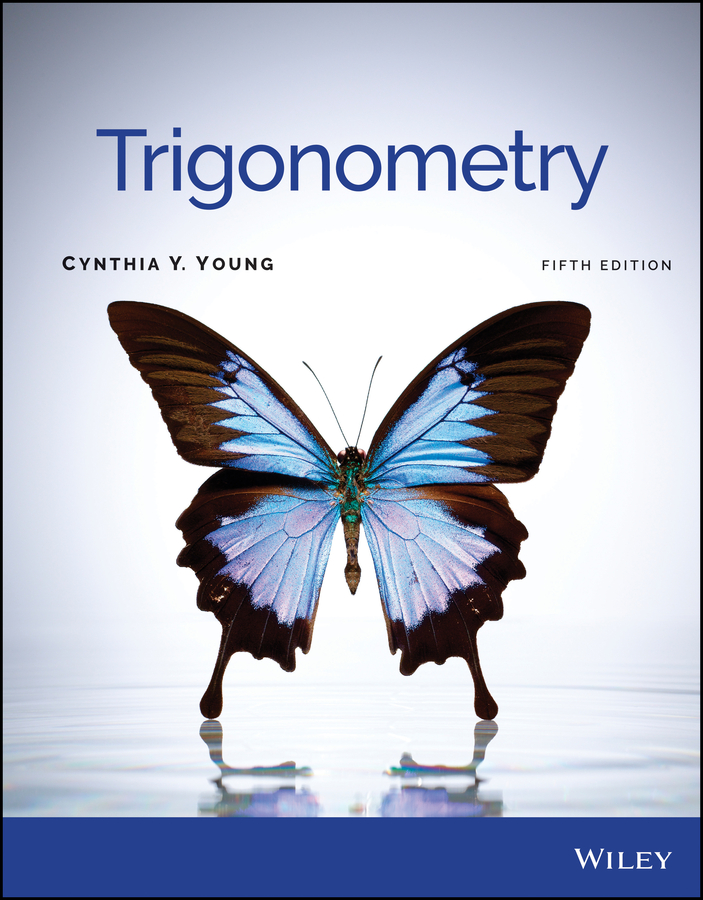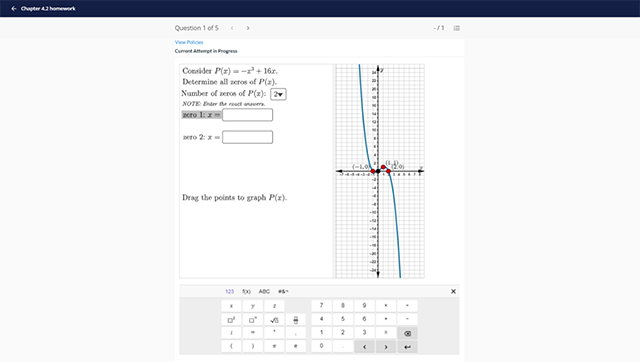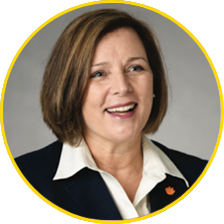
Trigonometry, 5th Edition
By Cynthia Young
WileyPLUS for Cynthia Young’s Trigonometry, 5th Edition allows students to take the guesswork out of studying by providing them with an easy to read and clear roadmap: what to do, how to do it, and whether they did it right. With this revision, Cynthia Young revised the text with a focus on the most difficult topics in Trigonometry, with a goal to bring more clarity to those learning objectives. Trigonometry, 5th Edition is written in a voice that speaks to students and mirrors how instructors communicate in lecture. Young’s hallmark pedagogy enables students to become independent, successful learners. Key features like “Parallel Words and Math” are now brought to life in WileyPLUS with assignable interactive animations. The new Corequisite Support appendices allow students at all skill levels to succeed.
Schedule a Demo Request Instructor AccountWant to learn more about WileyPLUS? Click Here
New Corequisite Support Appendices
New Corequisite support material has been added as a digital appendix to support corequisite courses. The comprehensive coverage of prerequisite topics ranges from prealgebra through intermediate algebra, including step-by-step instructional worksheets that can be used inside or outside of the classroom and an ample selection of homework and/or quiz exercises for each topic. Utilizing WileyPLUS, you can customize the corequisite topics and truly cater to your individual course needs.

Symbolic and Graphing Questions
New in WileyPLUS, symbolic and graphing questions powered by GeoGebra give instructors the ability to assign more complex auto-graded questions to improve conceptual understanding in math. Boost your homework assessments with flexible, accurate, and reliable symbolic palette entry and real-time manipulation of graphs.
WileyPLUS users will have best-in-class math assessment with:
– Numerical randomization to ensure each student gets a different question
– Automatically graded questions with fully worked solutions
– Accessible and mobile ready graphing questions
Author Lecture Videos
Cynthia Young’s over 270 instructional videos mirror the instructor’s voice outside the classroom. The Cynthia Young Lecture Videos provide worked examples of the most difficult concepts in each chapter and section of the course.
What’s New
-
- New symbolic and graphing questions powered by GeoGebra give instructors the ability to assign more complex auto-graded questions to improve conceptual understanding in math.
- Interactive animations are now available with assignable questions to keep students engaged on the topic and reinforce understanding of key concepts
- New and updated examples and problems were developed with a focus on equity and equality and to provide relevancy for today’s student.
- New problems have been added to exercise sets to expand the number of medium difficulty problems, providing ample question coverage across all difficulty levels.
- Updated Inquiry Based Learning and Modeling our World projects have been added to EVERY chapter providing relevant real-world applications for modeling and discovery projects.
- New Corequisite support material has been added as a digital appendix to support corequisite courses. The comprehensive coverage of prerequisite topics ranges from prealgebra through intermediate algebra, including step-by-step instructional worksheets that can be used inside or outside of the classroom, and an ample selection of homework and/or quiz exercises for each topic.
- New TestGen computerized test bank allows for quick creation of algorithmic quizzes or tests. TestGen provides a variety of question types and also allows instructors to create their own questions.
- Algorithmic Test Bank Questions have been added to the WileyPLUS question bank.

Cynthia Y. Young is the Founding Dean of the College of Science and Professor of Mathematical and Statistical Sciences at Clemson University and the author of College Algebra, Trigonometry, Algebra and Trigonometry, and Precalculus. She holds a BA in Secondary Mathematics Education from the University of North Carolina (Chapel Hill), an MS in Mathematical Sciences from the University of Central Florida (UCF), and both an MS in Electrical Engineering and a PhD in Applied Mathematics from the University of Washington. She has taught high school in North Carolina and Florida, developmental mathematics at Shoreline Community College in Washington, and undergraduate and graduate students at UCF.
Prior to her leadership role at Clemson, Dr. Young was a Pegasus Professor of Mathematics and the Vice Provost for Faculty Excellence and UCF Global at the University of Central Florida (UCF). Dr. Young joined the faculty at UCF in 1997 as an assistant professor of mathematics, and her primary research area was the mathematical modeling of the atmospheric effects on propagating laser beams. Her atmospheric propagation research was recognized by the Office of Naval Research Young Investigator Award, and in 2007 she was selected as a fellow of the Society of Photo-Optical Instrumentation Engineers (SPIE). Her secondary area of research centers on improving student learning in mathematics. She has authored or co-authored over 60 books and articles and has served as the principal investigator or co-principal investigator on projects with more than $5 million in federal funding. Dr. Young was on the team at UCF that developed the UCF EXCEL program, which was originally funded by the National Science Foundation to support the increase in the number of students graduating with a degree in science, technology, engineering, and mathematics (STEM). The EXCEL learning community approach centered around core mathematics courses has resulted in a significant increase in STEM graduation rates and has been institutionalized at UCF.
- Right Triangle Trigonometry
- 1.1 Angles, Degrees, and Triangles
- 1.2 Similar Triangles
- 1.3 Definition of Trigonometric Functions: Right Triangle Ratios
- 1.4 Evaluating Trigonometric Functions: Exactly and With Calculators
- 1.5 Solving Right Triangles
- Trigonometric Functions
- 2.1 Angles in The Cartesian Plane
- 2.2 Definition of Trigonometric Functions: The Cartesian Plane
- 2.3 Evaluating Trigonometric Functions for Nonacute Angles
- 2.4 Basic Trigonometric Identities
- Radian Measure and The Unit Circle Approach
- 3.1 Radian Measure
- 3.2 Arc Length and Area of a Circular Sector
- 3.3 Linear and Angular Speeds
- 3.4 Definition of Trigonometric Functions: Unit Circle Approach
- Graphing Trigonometric Functions
- 4.1 Basic Graphs of Sine and Cosine Functions: Amplitude and Period
- 4.2 Translations of The Sine and Cosine Functions: Addition of Ordinates
- 4.3 Graphs of Tangent, Cotangent, Secant, And Cosecant Functions
- Trigonometric Identities
- 5.1 Trigonometric Identities
- 5.2 Sum and Difference Identities
- 5.3 Double-Angle Identities
- 5.4 Half-Angle Identities
- 5.5 Product-To-Sum and Sum-To-Product Identities
- Solving Trigonometric Equations
- 6.1 Inverse Trigonometric Functions
- 6.2 Solving Trigonometric Equations That Involve Only One Trigonometric Function
- 6.3 Solving Trigonometric Equations That Involve Multiple Trigonometric Functions
- Applications of Trigonometry: Triangles and Vectors
- 7.1 Oblique Triangles and The Law of Sines
- 7.2 The Law of Cosines
- 7.3 The Area of a Triangle
- 7.4 Vectors
- 7.5 The Dot Product
- Complex Numbers, Polar Coordinates, And Parametric Equations
- 8.1 Complex Numbers
- 8.2 Polar (Trigonometric) Form of Complex Numbers
- 8.3 Products, Quotients, Powers, And Roots of Complex Numbers; De Moivre’s Theorem
- 8.4 Polar Equations and Graphs
- 8.5 Parametric Equations and Graphs
- Appendix A: Algebraic Prerequisites and Review
- A.1 Factoring Polynomials

